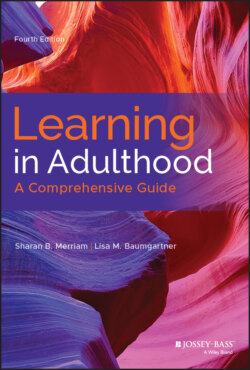Читать книгу Learning in Adulthood - Sharan B. Merriam - Страница 31
Summary
ОглавлениеLearning has been shaped by technology through the ages. Higher education institutions used the mail to deliver material to learners as evidenced by efforts to educate women and the correspondence courses offered by universities. Radio and television expanded adults' access to higher education in the early and mid-twentieth century. By the 1970s, British Open University and Empire State College opened. These institutions combined television, radio, and correspondence courses in addition to face-to-face courses to appeal to working adults who wanted to further their education. As technology has advanced, online education has become common. Online education increased in the 1990s and gave rise to brick and mortar institutions such as Penn State University and the State University System of New York offering online programs. For-profit institutions increasingly offered online courses and by the early 2010s, MOOCs became more popular. However, they lost some of their appeal due to high dropout rates. In 2014, blended learning technologies meant that student–faculty interactions could be more personal, and this trend toward personalization of the learning experience is expected to continue.
Not only has technology affected formal course delivery, we also use technology during our daily, informal learning. We perform Internet searches on a variety of topics, look up YouTube videos to learn skills, and use mobile phones and use virtual reality technology for workplace learning. We read, reflect, and comment on social media posts and find online support and interest groups where we can share ideas. We use our mobile phones to engage in informal and nonformal learning. With the advancements in technology, including smaller and faster computers and cloud computing, we have “an expanding view of our personal and collective adult learning universe” (Parker, 2014, p. 218).
Technology has evolved. Computers have become smaller and faster. Cloud computing has made access to materials easier. Educators' attempts at a teacherless classroom have progressed from Pressey's Teaching Machine to the use of artificial intelligence to help students with their writing. Technology has provided us with future technological developments that seem to suggest an increasingly learner-centered, personalized experience.
